- Punchy PHEV drivetrain sounds pretty good
- Reasonable claimed 76km EV range
- PHEV doesn't impede on CX-60's packaging
- PHEV's extra weight is noticeable when driving
- PHEV can't be DC fast charged
- Back seat and boot aren't massive
It’s fair to say that as we move towards a more sustainable future for our motoring needs, car makers will start to make more and more electrified products. That’s far easier for bigger car makers or ones that have strategic partnerships because the immense costs of electrified products can be spread around. For smaller car makers like Mazda, electrification has more challenges. So far from the brand, we’ve only seen the underwhelming electric MX-30, but now we’ve got the brand’s first plug-in hybrid: the 2023 Mazda CX-60 P50e. Is it all you could want from an electrified product?
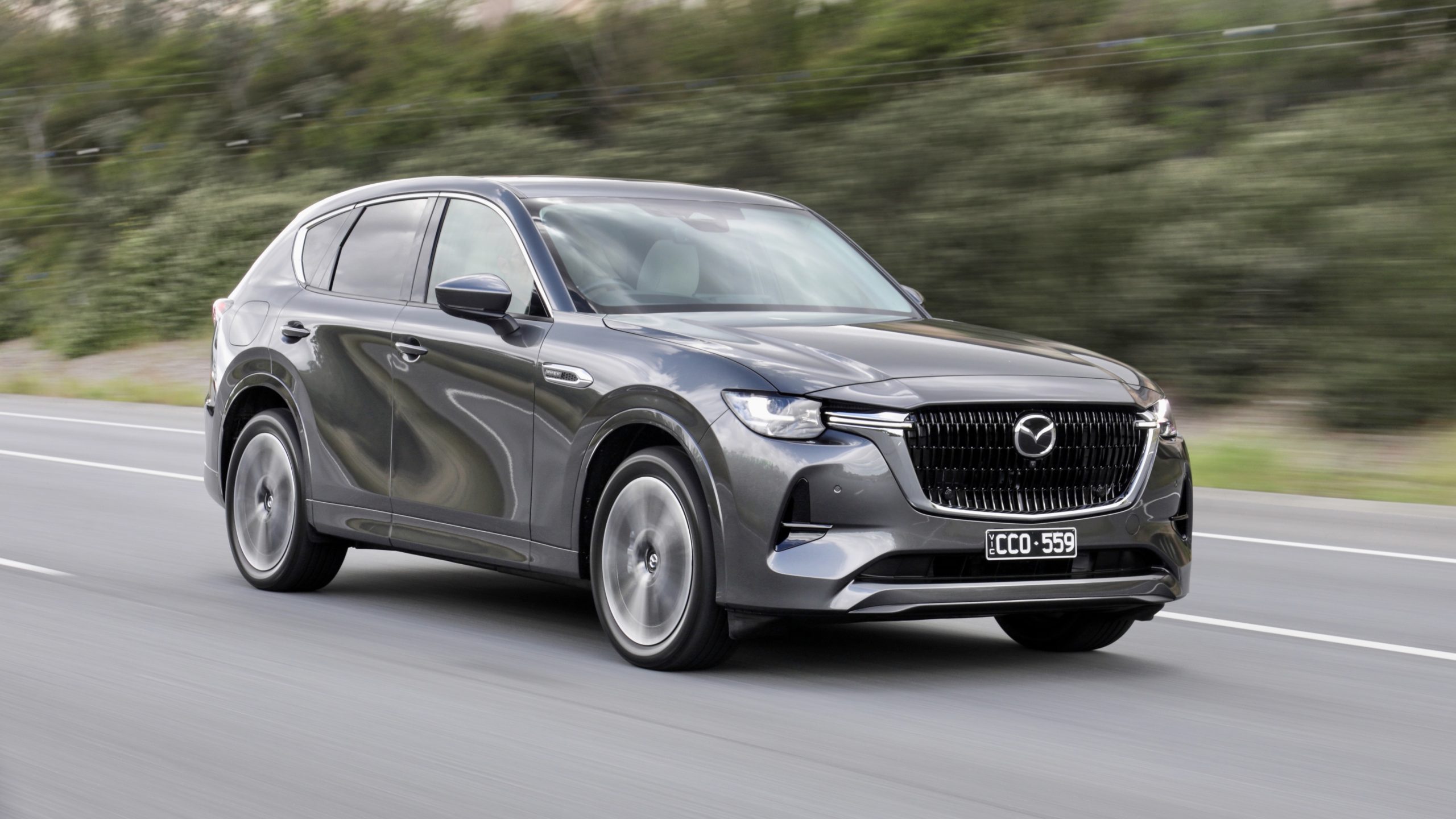
Plug-in hybrids aim to give car buyers the best of both worlds: all-electric driving on a charged battery, but once that battery is depleted, the cruising range of a regular petrol or diesel-powered car. Australian consumers don’t see much appeal in PHEVs, however – perhaps due to lack of PHEV choice, EVs have outsold them 12 to one so far in 2023. The CX-60 was first launched in Europe over a year ago – purely as a PHEV – and now, it’s finally made it to Australia also with mild-hybrid inline six petrol and diesel powerplants. Is the PHEV the drivetrain of choice for the CX-60 range?
Price & Equipment: 8.5/10
For now, there are three 2023 Mazda CX-60 models available in Australia: entry-level Evolve, mid-spec GT and top-spec Azami and each is available with petrol, diesel or plug-in hybrid power. Pricing kicks off around $78,000 drive away for the Evolve PHEV, while the GT PHEV costs around $87,000 drive away and the top-spec Azami PHEV costs around $93,000 drive away. Compared with each petrol variant, the PHEV attracts a $10,500 price premium.
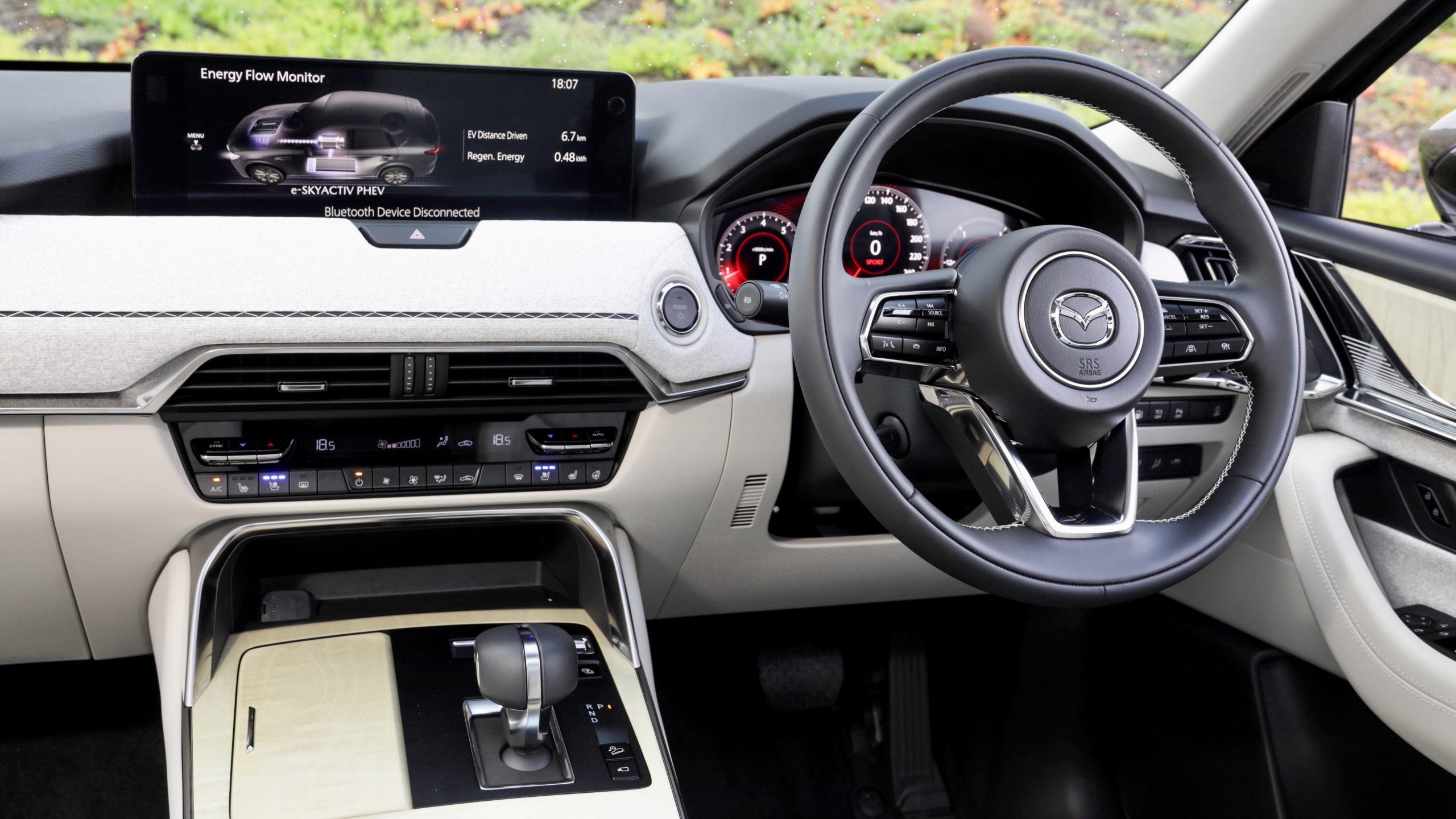
Standard equipment on the Evolve includes 18-inch alloy wheels, dusk-sensing automatic LED headlights, auto wipers, ‘Maztex’ synthetic leather upholstery, eight-way manual adjustment for the driver’s seat, a leather steering wheel and gear knob, keyless entry and start with heated and auto-dimming/auto-folding mirrors, an electric tailgate, dual-zone climate control with rear vents, a 10.25-inch infotainment screen with wireless Apple CarPlay and Android Auto, digital radio, satellite navigation, a 7.0-inch driver’s display screen, a heads-up display, a wireless phone charger, USB-C charging ports, a 150W AC outlet in the rear seat and an eight-speaker sound system. Choosing the plug-in hybrid Evolve adds a larger 12.3-inch digital driver’s display and a 1,500W rear AC outlet over the petrol and diesel variants.
Safety equipment includes 10 airbags, auto emergency braking (AEB) with pedestrian, cyclist and intersection assistance, lane keep assist with lane departure warning, blind-spot monitoring and rear-cross traffic alert (with braking), low-speed rear auto braking, driver attention monitoring, auto high beam, traffic sign recognition, exit warning assist, adaptive cruise control with stop and go functionality, front and rear parking sensors and a 360-degree camera. The CX-60 range recently earned a five-star ANCAP safety rating, including a record 93 per cent score for child protection and an 89 per cent score for vulnerable road user protection.
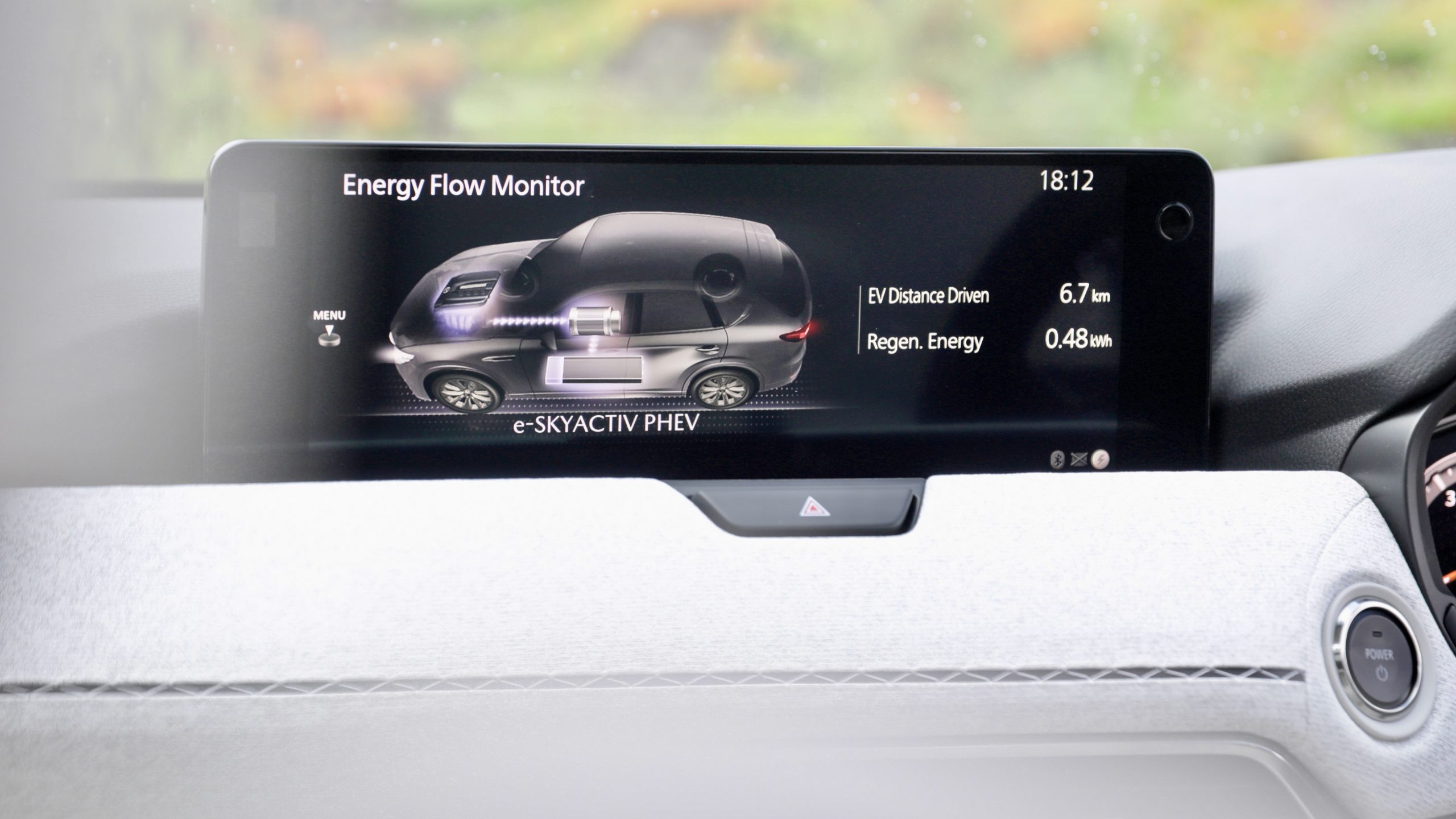
Optional for the Evolve are the $4,000 Luxury Package – which adds black leather trim, heated front seats, power front seat adjustment and driver’s seat and memory position memory – and the $2,000 Vision Technology Package, which adds a 360-degree camera with ‘see-through’ functionality, a 12.3-inch digital driver’s display, driver monitoring, lane centre assist for semi-autonomous highway driving and front cross-traffic alert.
Moving to the mid-spec GT adds a larger 12.3-inch central screen, black 20-inch wheels, black mirror covers, body-coloured lower cladding, electric steering wheel adjustment, leather upholstery with electrically adjustable front seats, heated front and outer rear seats, a 12-speaker Bose sound system, a heated steering wheel, a hands-free tailgate, a driver monitoring system to automatically adjust features like seating position and a panoramic sunroof.
Optional for the GT is the $2,000 Vision Technology Package, which includes the contents of the same package on the Evolve but further adds Matrix adaptive high beam functionality for the headlights.
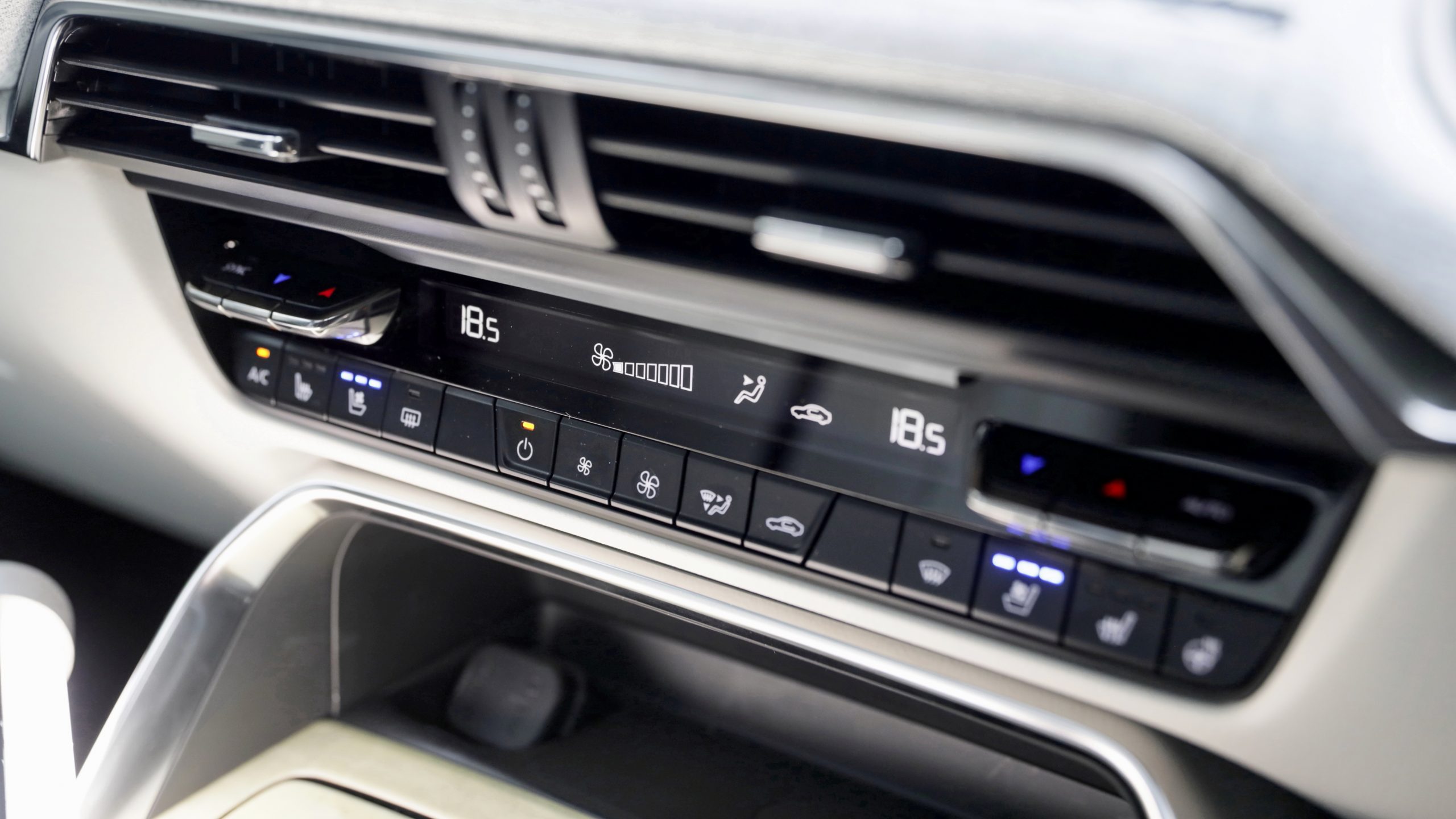
Finally, the top-spec Azami adds the contents of the GT’s Vision Technology Package as well as nappa leather upholstery, 20-inch alloy wheels, ventilated front seats and extra interior lighting.
Optional for the Azami is the $2,000 SP Package – which adds tan nappa leather trim, black exterior detailing like the wheels, side signature, mirrors and headlight detailing, a suede dashboard fascia and a two-tone steering wheel – or the $2,000 Takumi Package, which adds white nappa leather trim, bright interior detailing and white maple wood console and door trim inserts.
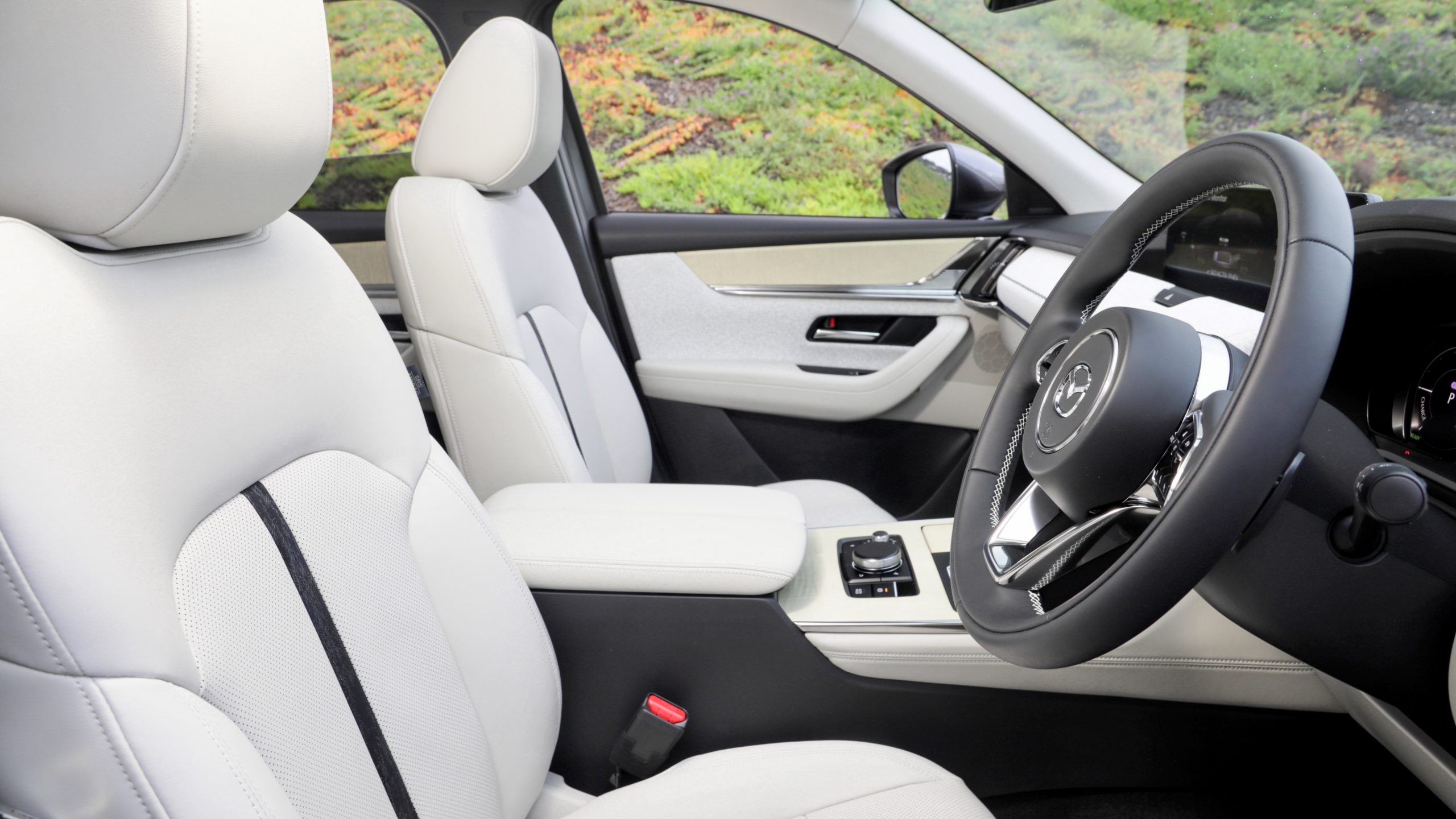
There are quite a lot of rivals to the CX-60: the Audi Q5, BMW X3, Mercedes-Benz GLC, Volvo XC60, Alfa Romeo Stelvio, Jaguar F-Pace, Range Rover Velar, Volkswagen Touareg and Genesis GV70. But only a few of them offer plug-in hybrid drivetrains: the Audi Q5 45 eTFSI is due in Australia soon, while the BMW X3 xDrive30e and a P400e variant of the Velar is also on offer. Looking further afield, buyers could look at the Mitsubishi Outlander PHEV as well, which is priced from around $77,000 drive away in top-spec Exceed Tourer guise, and the Peugeot 3008 GT Sport Plug-In Hybrid, which is priced at $82,990 drive away.
Performance & Economy: 8/10
Under the bonnet of the 2023 Mazda CX-60 P50e PHEV is a new plug-in hybrid drivetrain that combines the same 2.5-litre four-cylinder petrol engine that’s used in cars like the Mazda6 and CX-5 with an electric motor to make a system total of 241kW of power (at 6,000rpm) and 500Nm of torque (at 4,000rpm). That’s combined with a 17.8kWh lithium ion battery for up to a claimed 76km of all-electric driving, while the battery can be recharged at up to 7.2kW for a full recharge in around 2.5 hours – though it can’t be DC fast charged, unfortunately. Like other CX-60 models locally, the P50e is all-wheel drive, and it uses an eight-speed automatic transmission.
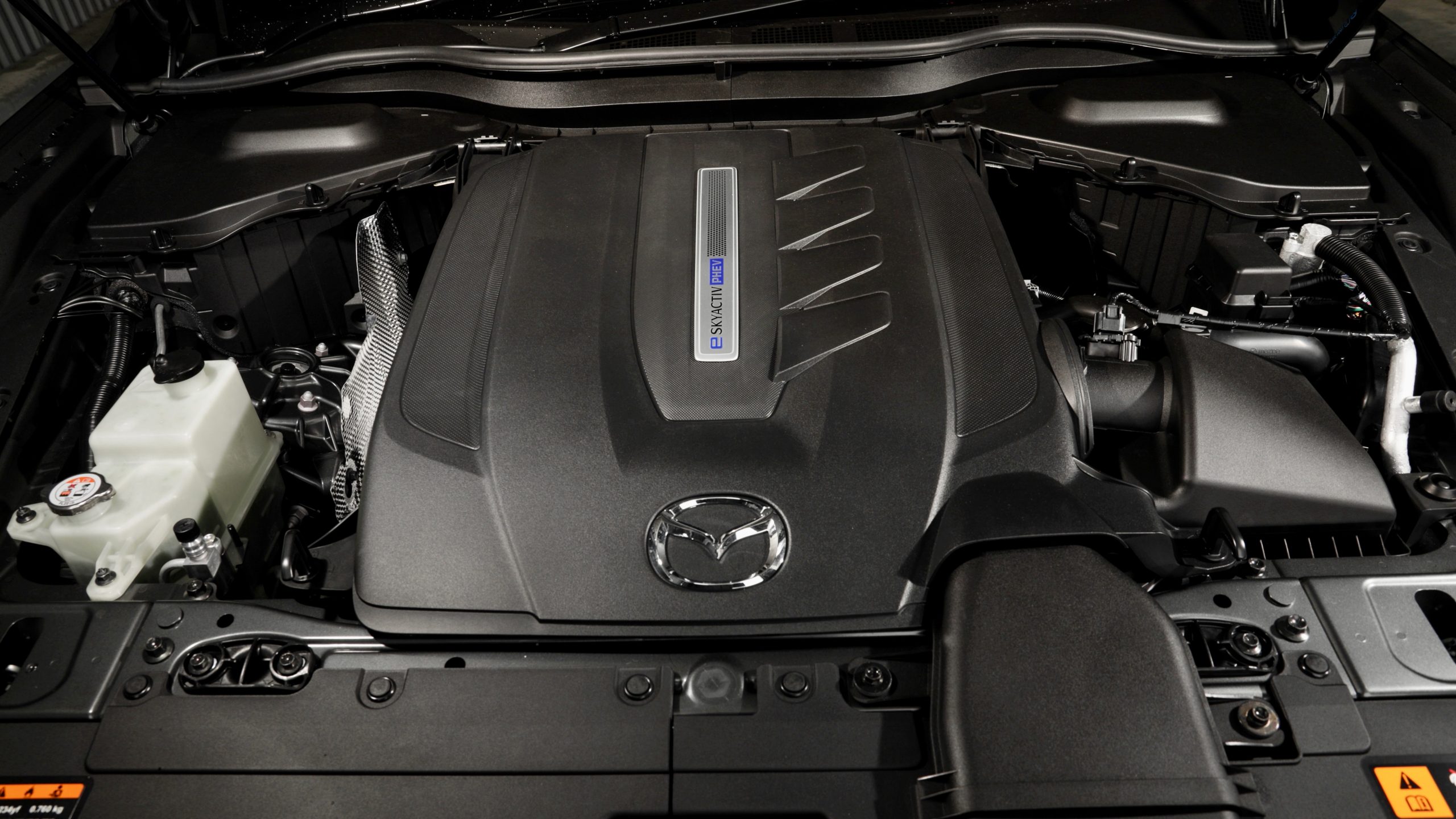
Driving in pure EV mode, the CX-60 P50e provides reasonable performance and gets up to speed reasonably quickly. Adding the petrol engine into the mix makes it the quickest accelerating Mazda on sale, with a claimed 5.9 second 0-100km/h sprint time. In reality, it initially feels faster than that thanks to the 100kW electric motor that does the heavy lifting from a stop – as you’d expect with an electric motor, it feels instant despite the PHEV’s minimum 2,111kg kerb weight. When accelerating hard, the CX-60 PHEV displays this lovely whine noise which makes it sound supercharged.
The only transmission available across the CX-60 range is a new eight-speed automatic, which doesn’t use a torque converter but a multi-plate clutch instead. Why? For greater efficiency, according to Mazda. In practice, it’s a pretty good gearbox that shifts smoothly and crisply with none of that typical low-speed hesitation that you get from a dual-clutch transmission – it feels as linear as a regular torque converter as well. Having gears is relatively unusual for a PHEV – the Outlander PHEV uses an eCVT, for example, though segment rivals all use eight-speed autos as well.
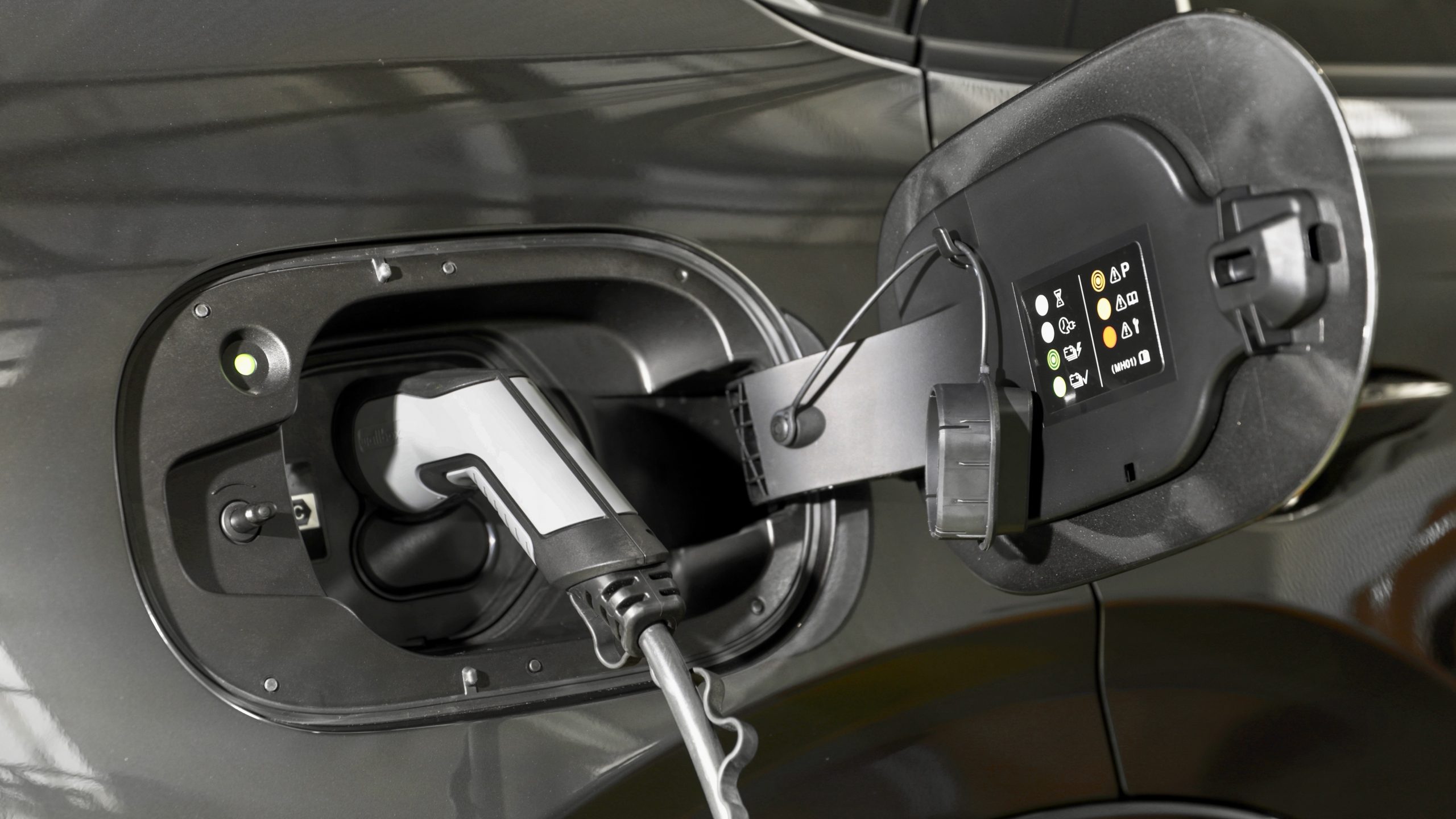
The claimed combined fuel consumption for the 2023 Mazda CX-60 P50e is 2.1L/100km, with claimed CO2 emissions of 49g/km – but like all other plug-in hybrids, that depends on how much it is charged and if you don’t charge it, fuel consumption will climb a lot. Unfortunately, we weren’t able to obtain a fuel consumption figure for the PHEV on the launch program, and look forward to testing it soon. The P50e must run on 95RON premium unleaded and due to its battery, it has a smaller 50-litre fuel tank.
Ride & Handling: 7/10
Based on Mazda’s new ‘Large Product Group’ all-wheel drive platform – the first product to do so – the 2023 Mazda CX-60 takes what we know and love from the hugely successful CX-5 and adds extra refinement, more enjoyable handling thanks to the rear-biased platform and even more active safety equipment to make a product that is an excellent long-distance grand touring machine. Sydney to Melbourne in a day would be absolutely no trouble for the CX-60 because it’s very quiet at speed, while its new seats – with more cushion length than the CX-5 and CX-8 for greater under-thigh support – are definitely Mazda’s most comfortable yet (though we wish they had more side bolstering).
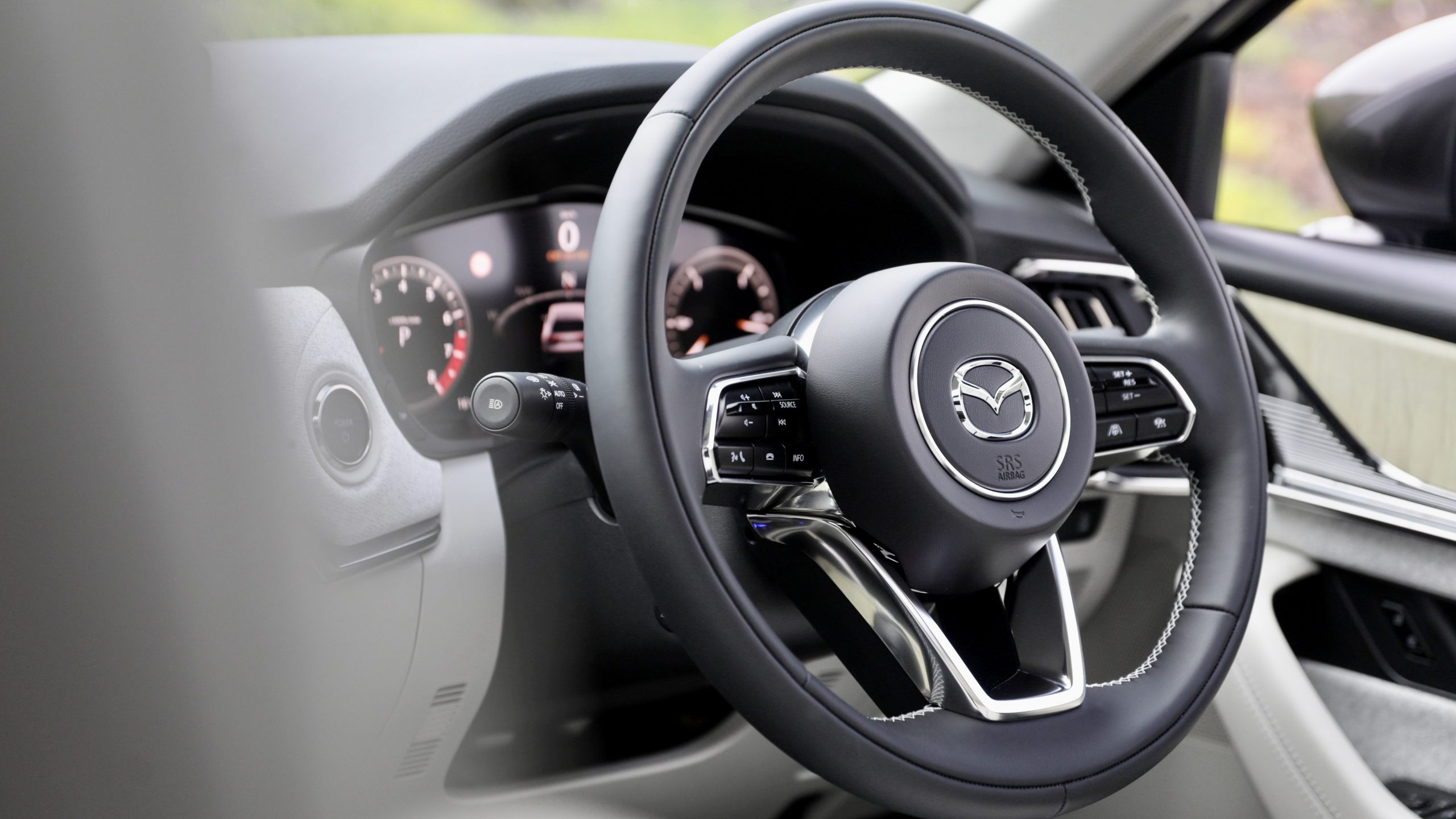
Dynamically, the CX-60 is a pretty successful first attempt at a premium mid-size SUV from Mazda. The CX-5 is already regarded as one of the best handling mid-size SUVs around and the CX-60 takes the CX-5’s level of fun and adds some extra keenness thanks to its new platform. At a minimum 2,111kg kerb weight for the PHEV, the CX-60 is no lightweight, and you do feel the PHEV’s weight more than the diesel and petrol variants. Even a quick drive, you’ll notice than the ride quality is definitely firmer thanks to the added 190kg of weight that the PHEV adds over the petrol CX-60. Is it too firm? That depends on your taste, but we wish it was softer.
The steering features a bit less feel than a CX-5, but it’s more fluid than the CX-5’s heavy rack, and quite linear too while the handling is nicely involving as well, though still not as fun as the X3. It’s manoeuvrable and feels reasonable nimble, too. We particularly like the rear-driven push out of faster bends that we experienced on the launch, which makes the CX-60 feel reasonably quick and fun.
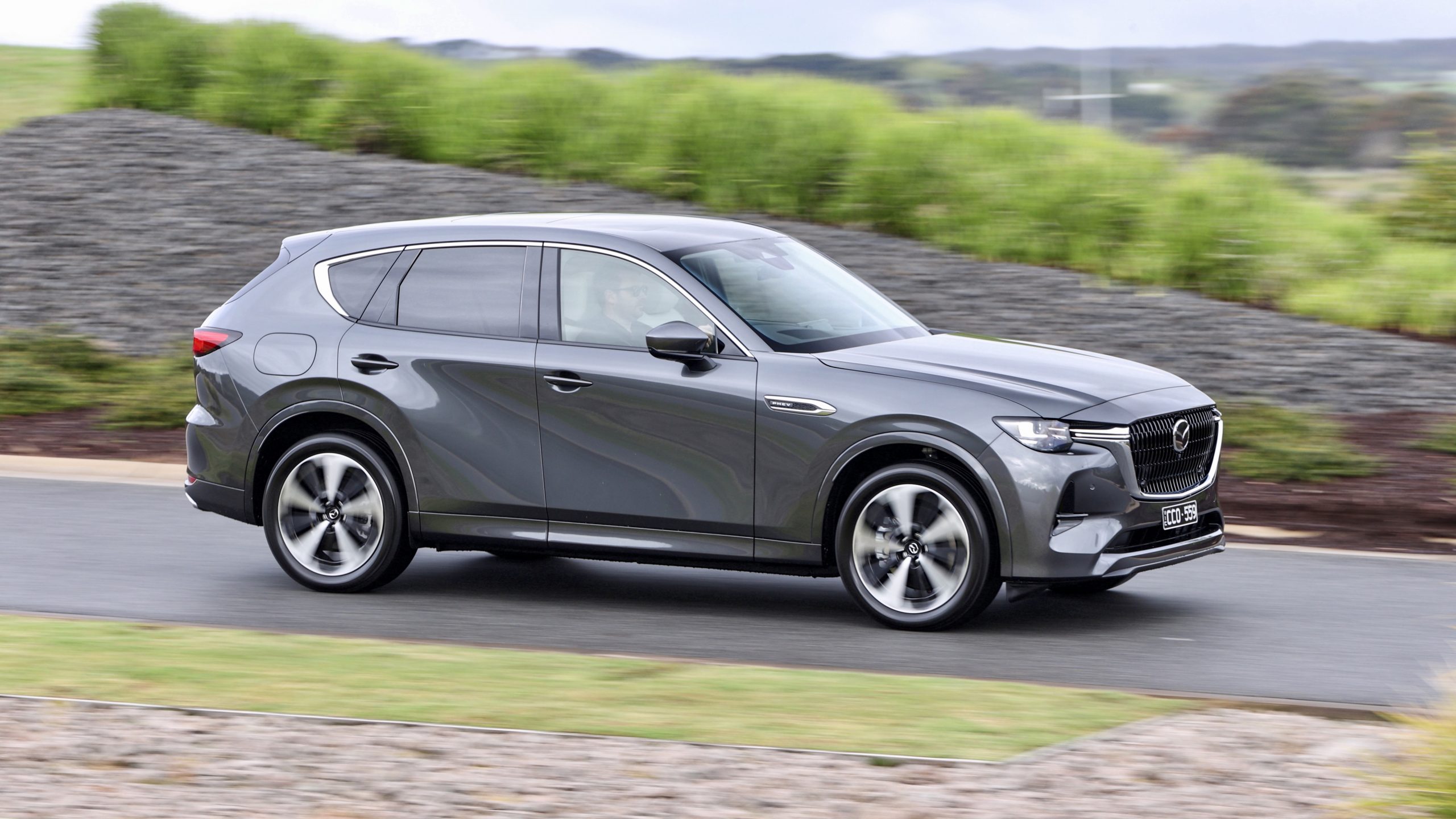
As we’ve come to expect for Mazda products, the active safety features in the 2023 Mazda CX-60 are well tuned, intuitive and not too intrusive either. While we think that active lane tracing assistance should be standard across the range and not just for cars with the Vision Assist Package, the CX-60 is otherwise extremely well catered for. Highlights in its active safety package include 10 airbags, wonderful Matrix adaptive high beam functionality for the GT Vision Package and Azami, a new rear vehicle occupant warning system to alert occupants from exiting the car with oncoming traffic and a very informative heads-up display that’s standard across the range. Those wanting to tow with their PHEV CX-60 will find that it’s rated to 2,500kg braked, with a 150kg maximum towball download weight – that’s 250kg more than a plug-in hybrid Volvo XC60.
Interior & Practicality: 8.5/10
Anybody who’s been in a recent model Mazda like a CX-30 or a Mazda3 will find the 2023 Mazda CX-60 interior instantly familiar with a similar layout, the same Mazda Connect operating system and the same wonderful details like damping for the stalks and high quality switchgear. But look a little closer and there are differences: the centre screen now measures 10.25-inches for the Evolve or 12.3-inches for the GT and Azami, the driver’s display is now fully digital in all PHEVs and the quality of materials like the leather on the seats, the faux leather or suede, or wool on the dashboard fascia and the extra chrome dotted around make the CX-60 feel special inside.
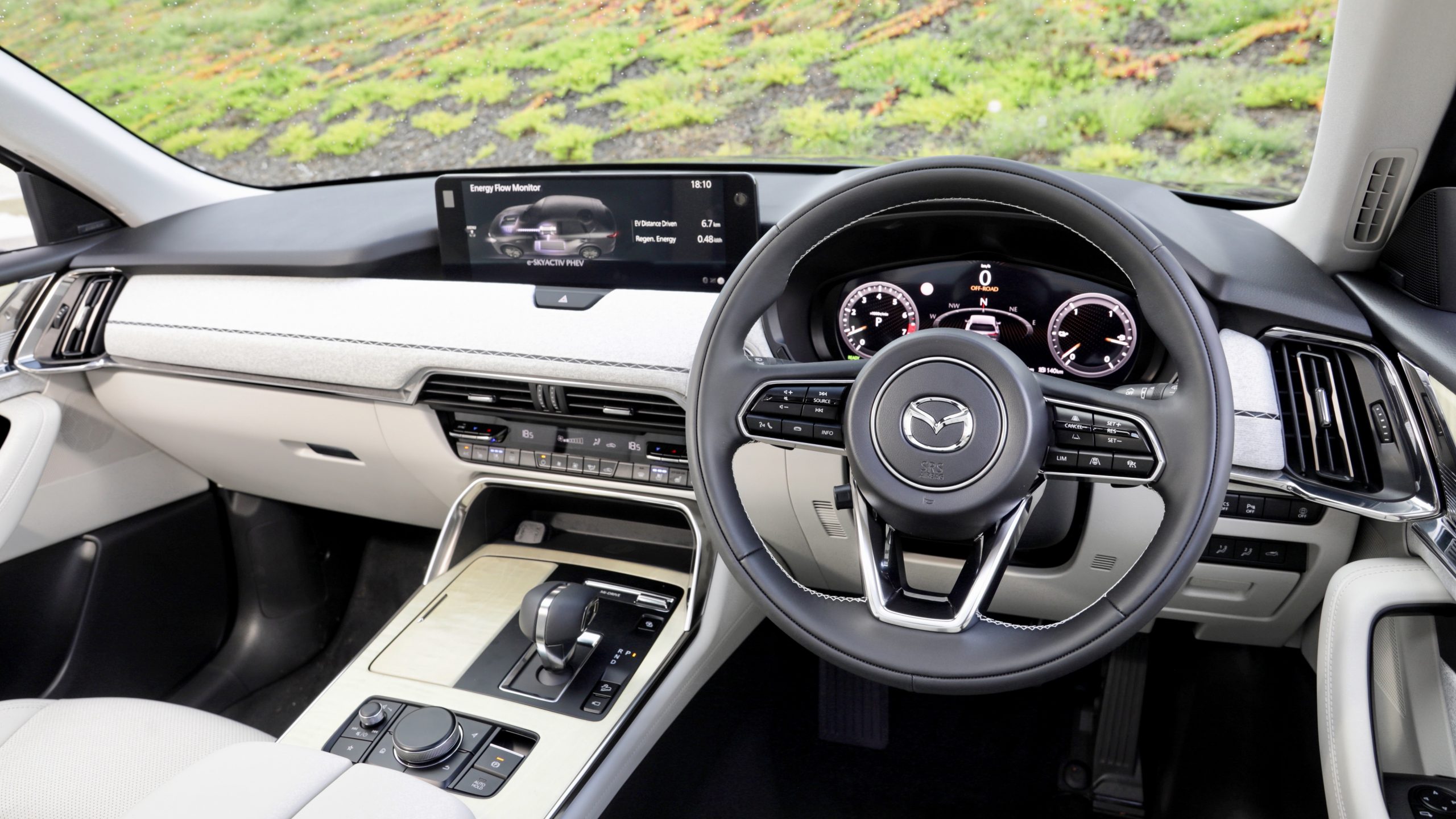
Like a lot of other aspects about the 2023 Mazda CX-60 P50e, the quality inside its cabin sets new standards for the Mazda brand – particularly in the top-spec Azami with its optional tan suede or white wool trim. Much of the CX-60’s cabin is lined with soft-touch materials – from the plush dashboard top to the edge of the centre console, you can tell that the company has paid a lot of attention to how everything inside the CX-60 feels. To this writer, it’s not quite at X3 or GLC level – some more depth to some of the materials like on the doors and textured dashboard and door trims would get it mighty close – but considering how much less expensive the CX-60 is, we can forgive it.
Centre of the CX-60’s cabin is a 10.25-inch infotainment screen in the Evolve and a larger 12.3-inch unit in the GT and Azami. It uses the same Mazda Connect software as lesser Mazda models and aside from the higher quality and larger screen, it offers no extra functionality compared to cars like the recently updated CX-5 and CX-8. There’s wireless Apple CarPlay and Android Auto, inbuilt satellite navigation, digital radio, a wireless phone charger and four USB-C charging ports but no live services to start the car from a smartphone app or live traffic functionality for the navigation – though Mazda Australia MD Vinesh Bhindi did hint to us that similar functionality was coming at some point.
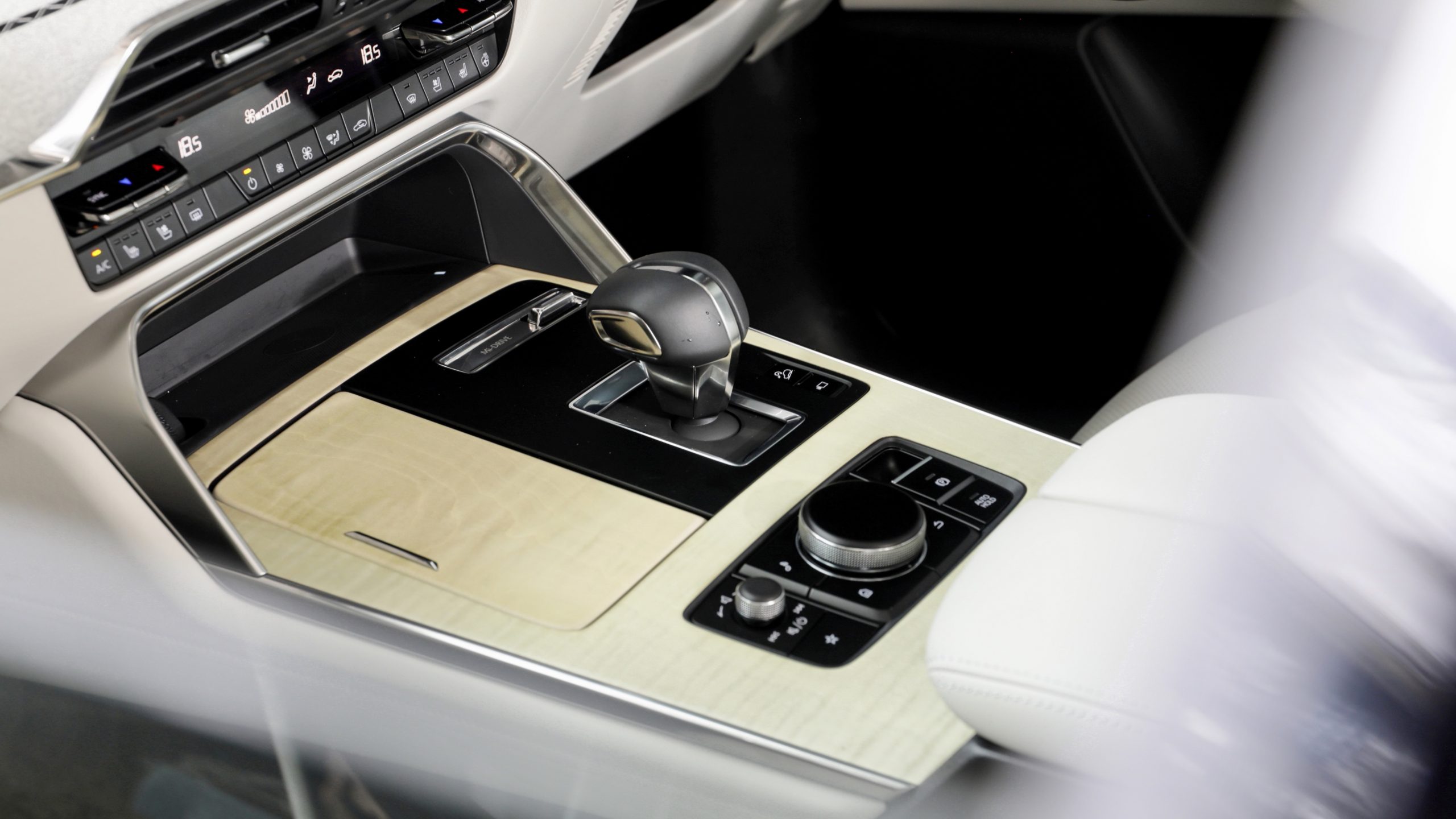
The CX-60’s cabin is reasonably practical with big door bins – which aren’t lined with felt or rubber, annoyingly – and a big glovebox, as well as a reasonable box underneath the centre armrest, two reasonable cupholders in the centre console and a shallow storage area underneath the dashboard with a wireless phone charger.
The rear seat of the 2023 Mazda CX-60 P50e is a lot like the CX-5 in that it’s quite comfortable and it’s well featured, though it’s not the roomiest. For six-footers, legroom isn’t huge but headroom is reasonable – even in the GT and Azami with their panoramic sunroofs. The rear seat itself is quite comfortable, with good lateral support and particularly good under thigh support, and there are plenty of features as well with heated outboard seats, two USB-C ports, air vents, a centre arm rest with cup holders and door pockets – though no separate climate zone or sun blinds in the doors. There are two ISOFIX points, as well as three top tether points – and the rear doors open to 90-degrees too.
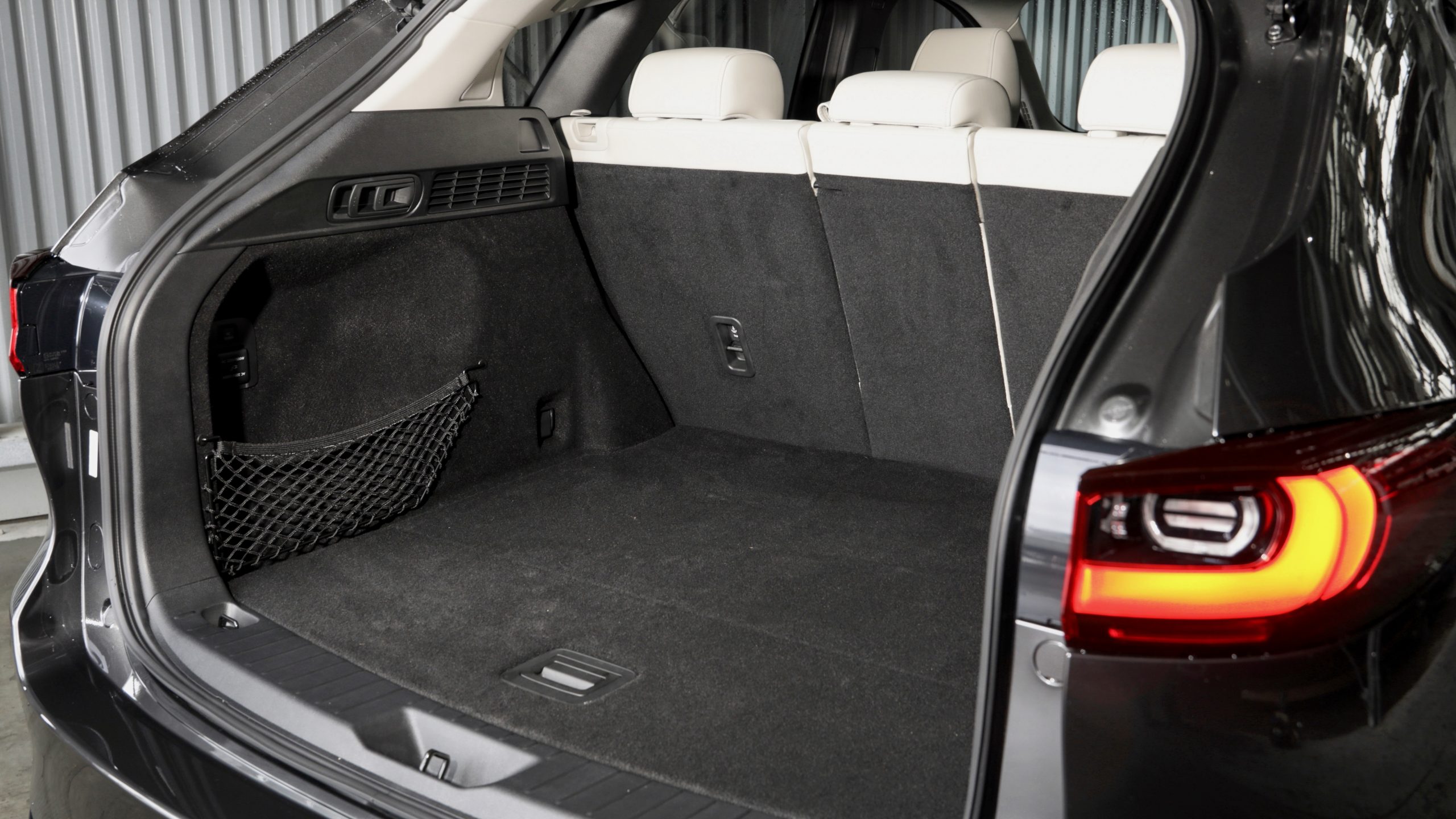
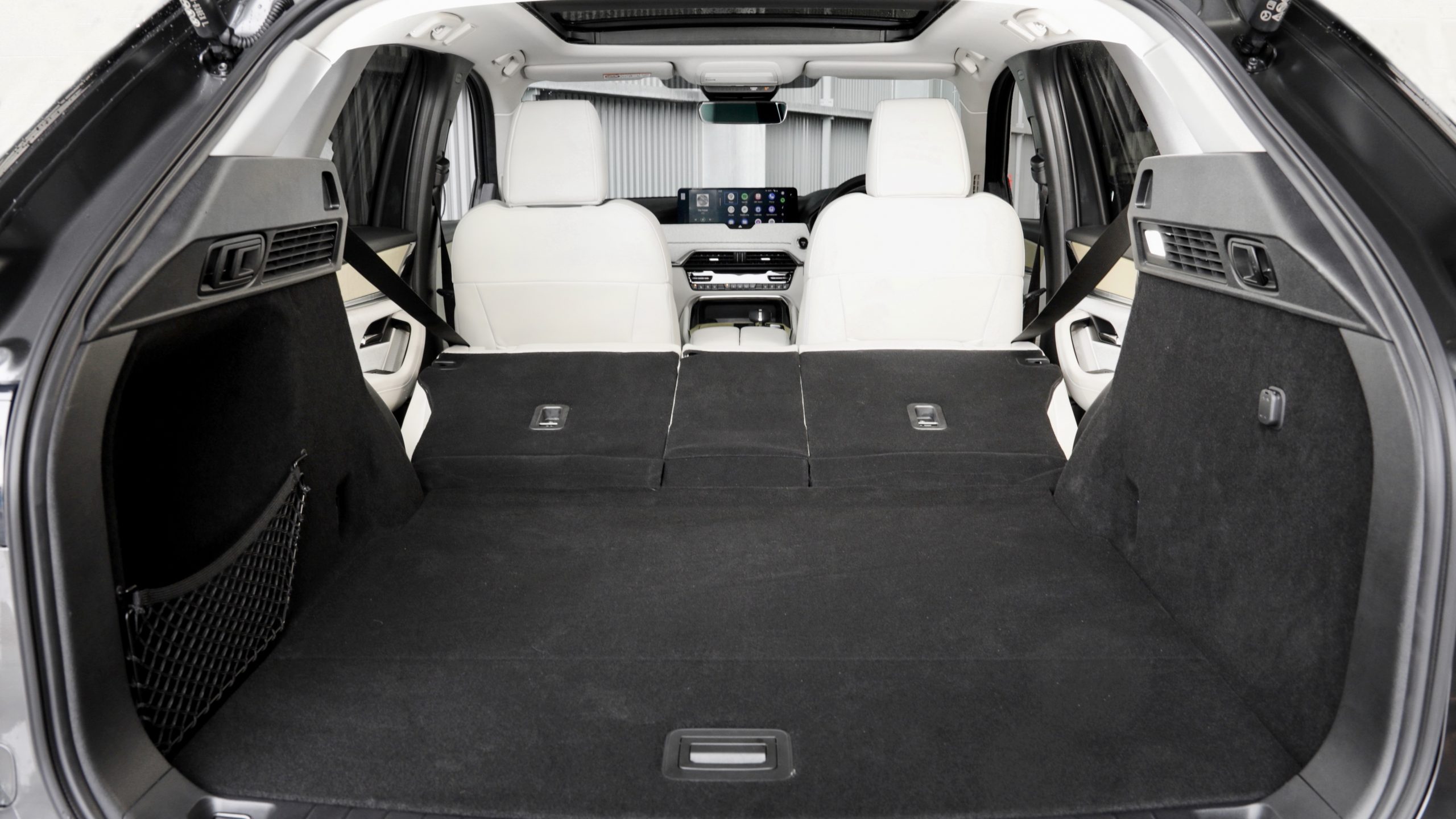
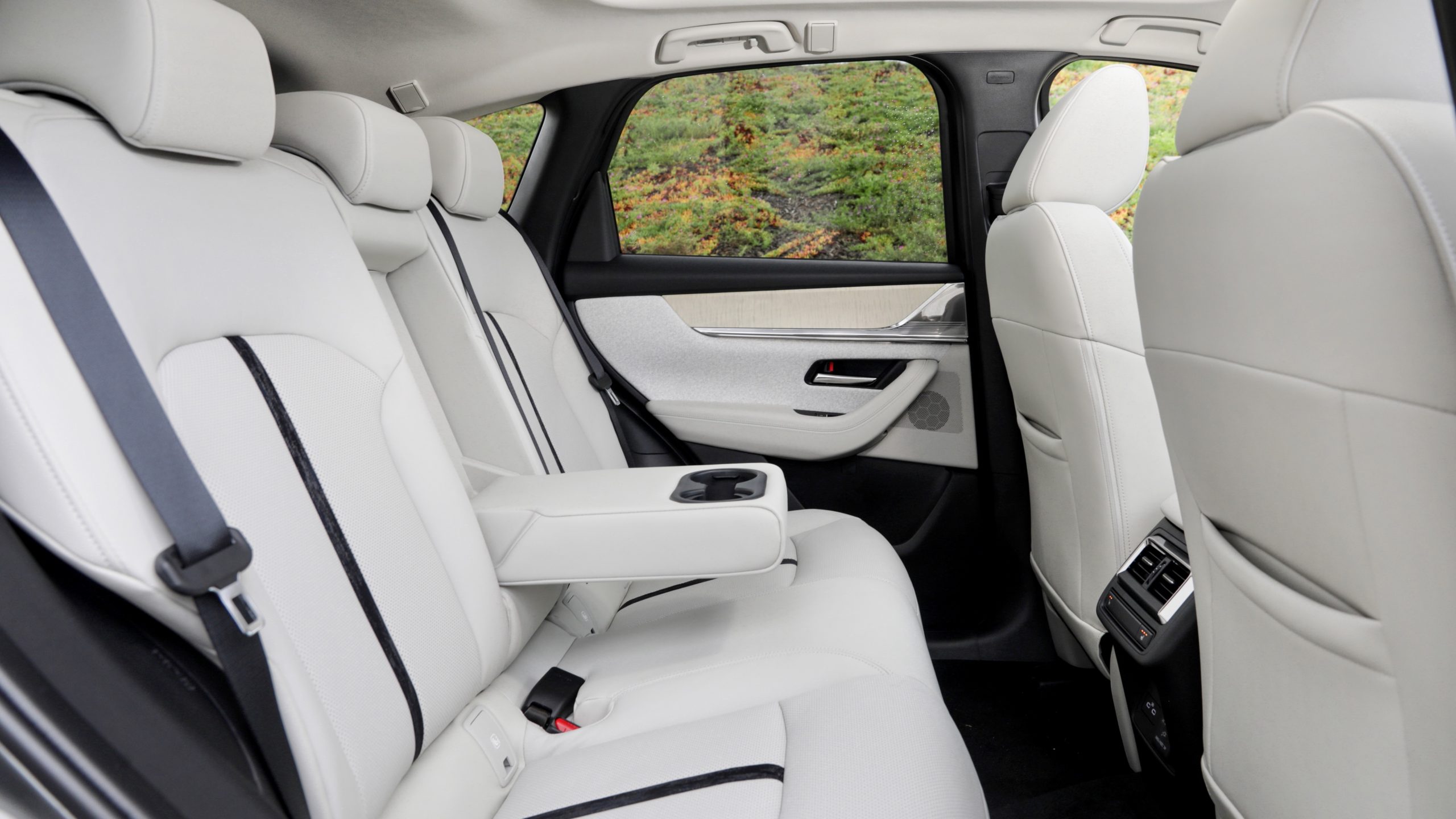
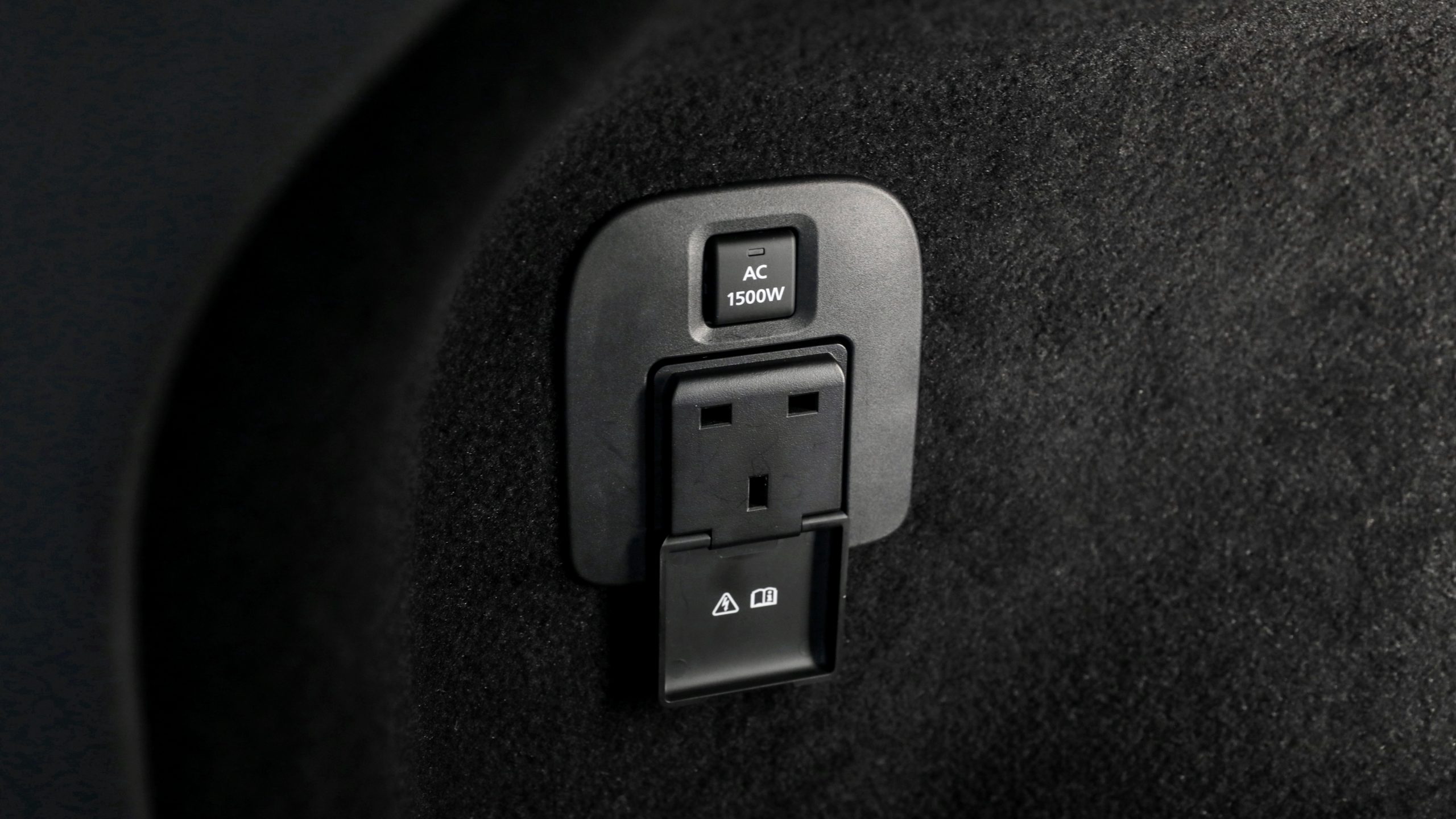
The boot of the CX-60 measures 477-litres with the seats up and a healthy 1,726L with the rear seats folded – 27L and 226L respectively larger than the plug-in hybrid variant of the X3. Impressively, the boot of the PHEV variants is identical in size to the petrol and diesel, but it does lack a spare wheel. The boot itself is nicely finished and has a few features like under-floor and side storage, a household socket, 40:20:40-split rear seats, a 12V socket and remote releases for seat folding – but no hooks to hang bags off or clever floor partition system like the CX-5 has.
Service & Warranty: 9/10
Like all other new Mazda products, the 2023 Mazda CX-60 P50e PHEV is equipped with a five-year/unlimited km warranty with five years of roadside assistance as standard, while the battery is covered by an eight-year/160,000km warranty too. Like other new petrol Mazda products too, it has 15,000km service intervals, and five years/75,000km of servicing costs $2,590 or $518 per service – comfortably less than its mild-hybrid petrol and diesel siblings.
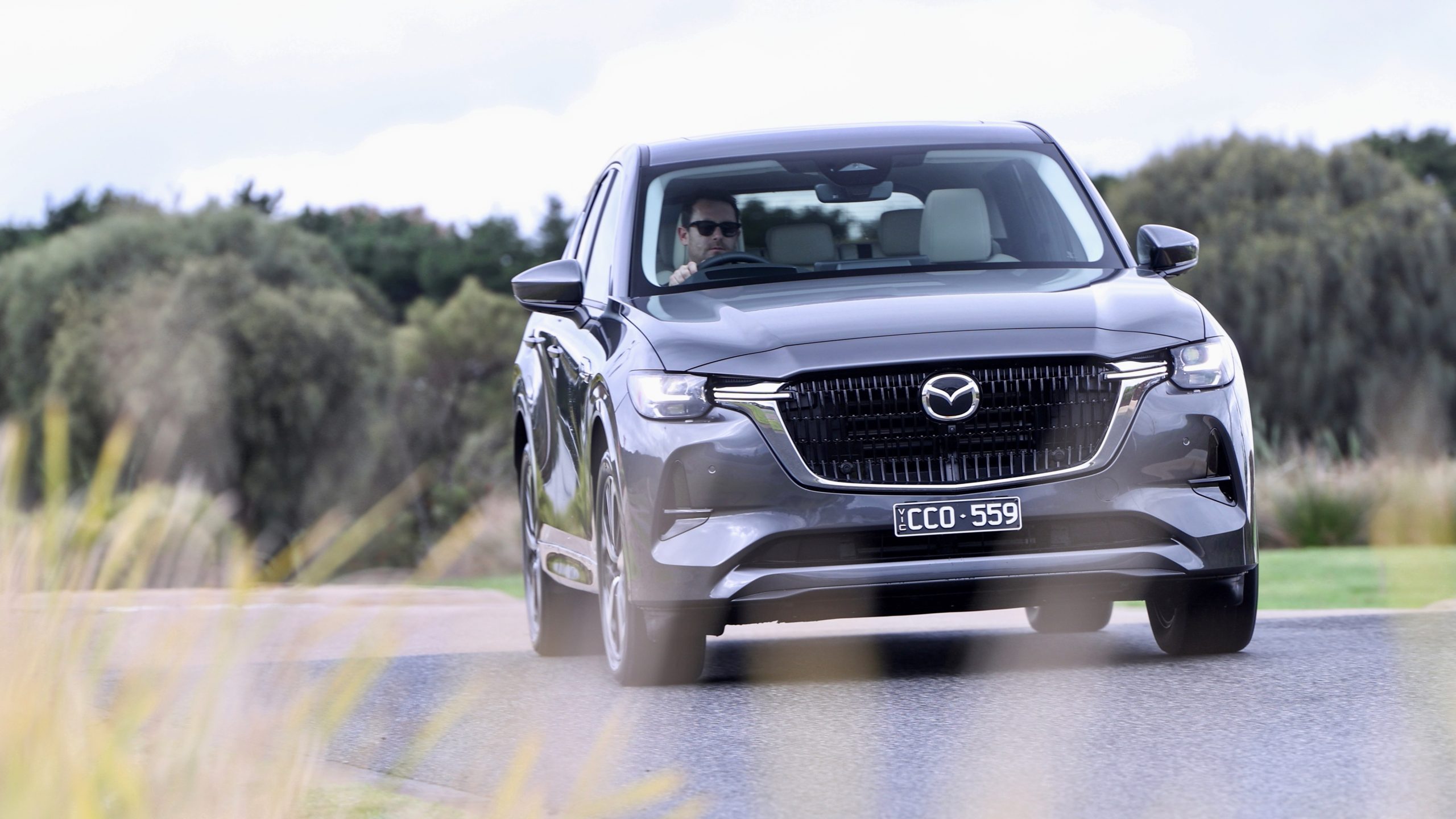
All of Mazda’s competitors in this space offer similar warranty terms, though BMW only offers three years of roadside – yet Volvo offers eight years of roadside as standard. Actual service pricing varies from dealership to dealership but many brands offer service packages at the time of purchase for better value. For example, BMW offers a five-year/80,000km service pack for $2,400 ($480 per service) and Volvo offers a five-year/75,000km equivalent for $3,000 ($600 per service).
The 2023 Mazda CX-60 P50e Plug-In Hybrid DiscoverAuto Rating: 8.1/10
All things considered, the 2023 Mazda CX-60 P50e plug-in hybrid is, like its petrol and diesel siblings, a solid entrant into the premium mid-size SUV segment. Like the other CX-60 variants, it’s comfortable, excellent quality, nice to drive, very well equipped and against its main competition, good value for money as well. The PHEV is also quite quick, and its powertrain, unlike a lot of other PHEVs in the market, gives it character that we predict enthusiasts will warm to.
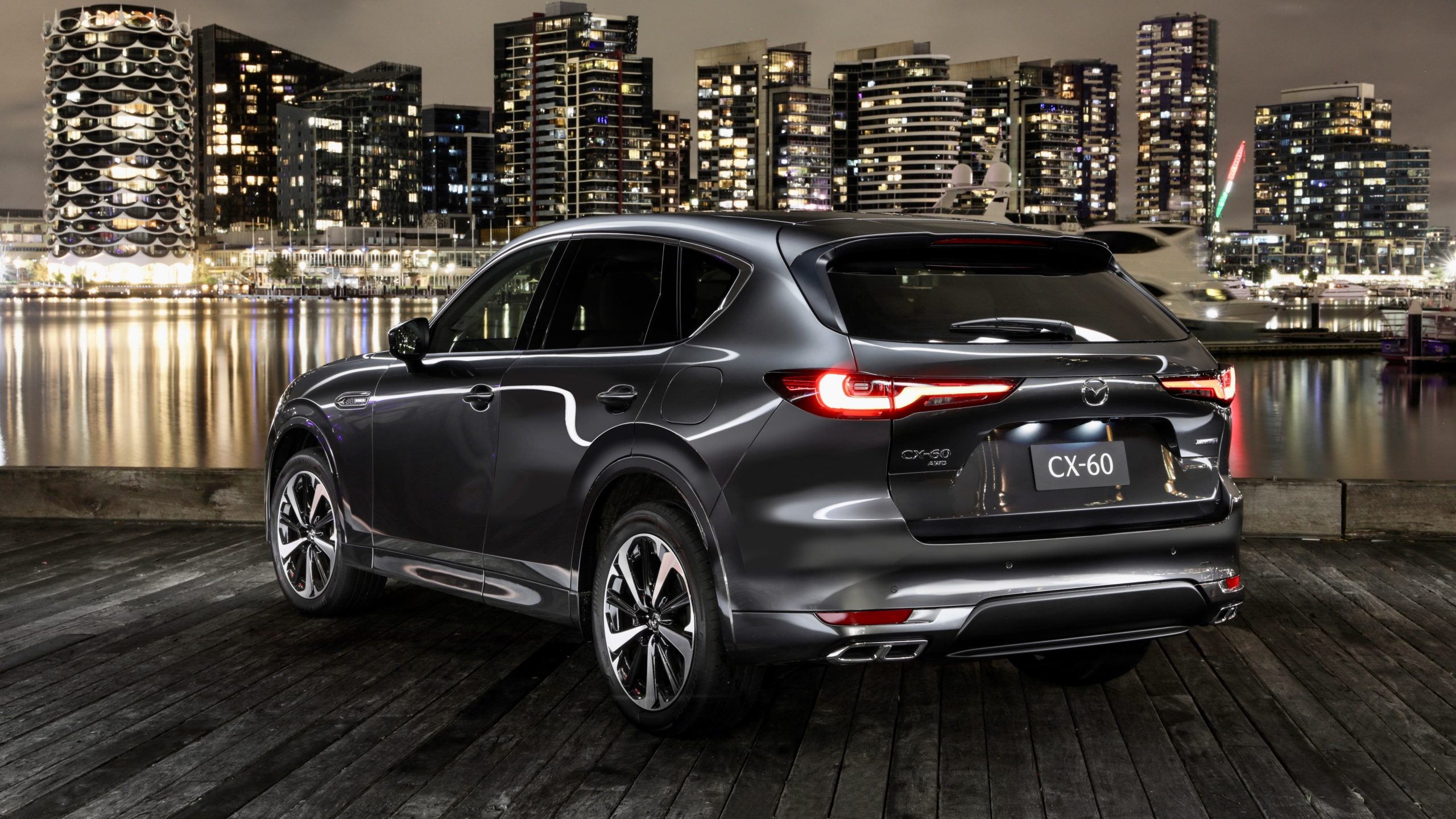
Aside from issues that it shares with other CX-60 variants like a lack of a touchscreen at speed and somewhat small rear seat space, our complaints with the CX-60 PHEV are few: the extra weight of the PHEV system is easily noticeable from behind the wheel, the ride quality is too firm, it cannot be DC fast charged and its $10,500 price premium over the petrol CX-60 is not small. Plus, like other PHEVs on the market, if it’s not charged, fuel consumption will climb rapidly and the CX-60 diesel is quite efficient from our launch experience anyway. But overall, we think that the CX-60 is an good product and the PHEV drivetrain only adds to its wide range of appeal for many buyers.
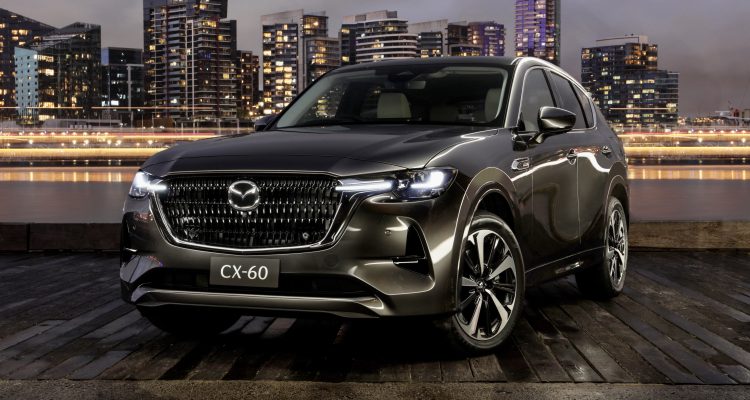
Leave a Reply